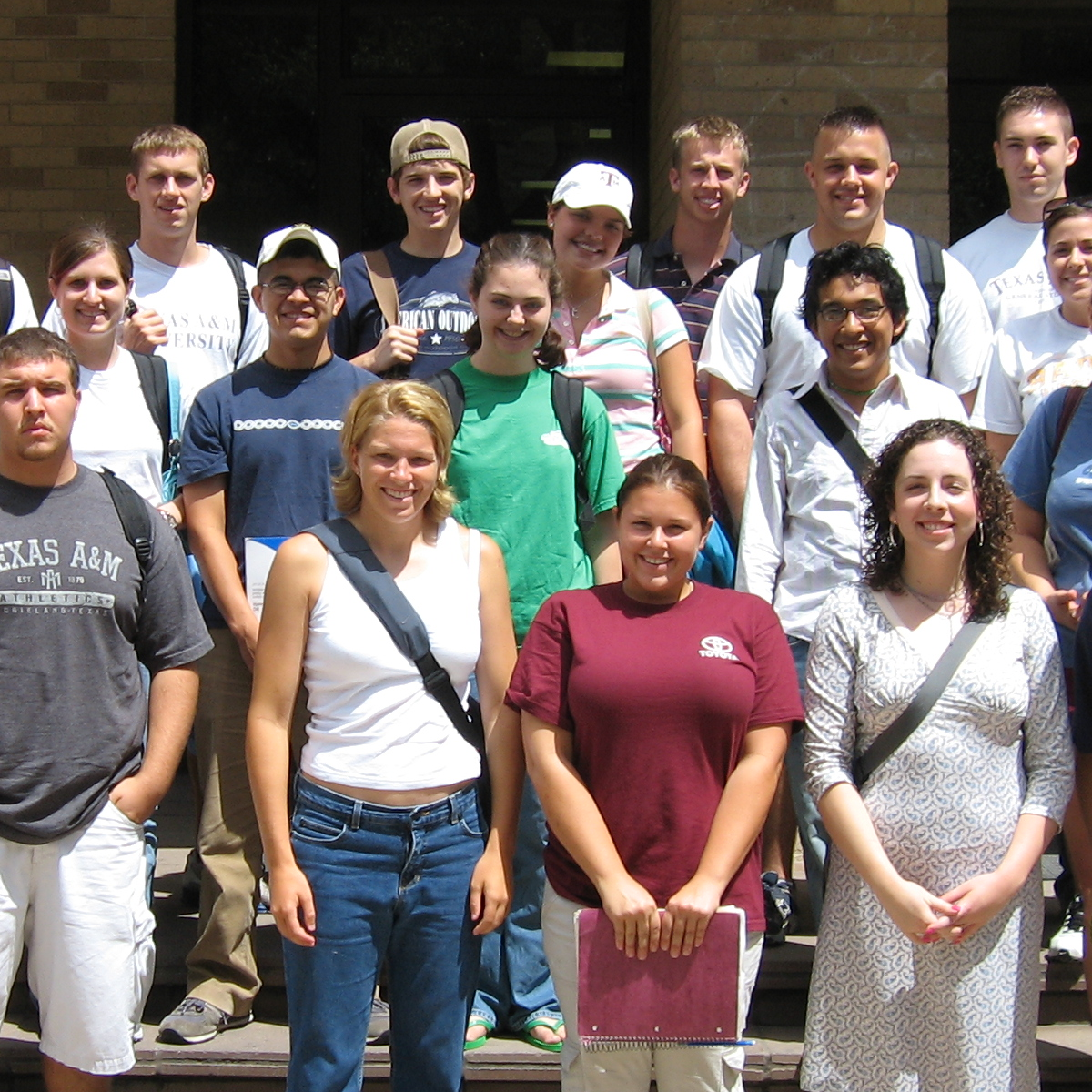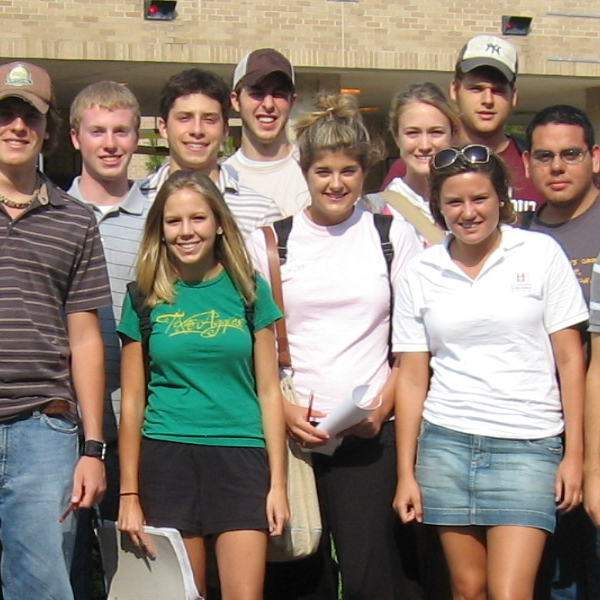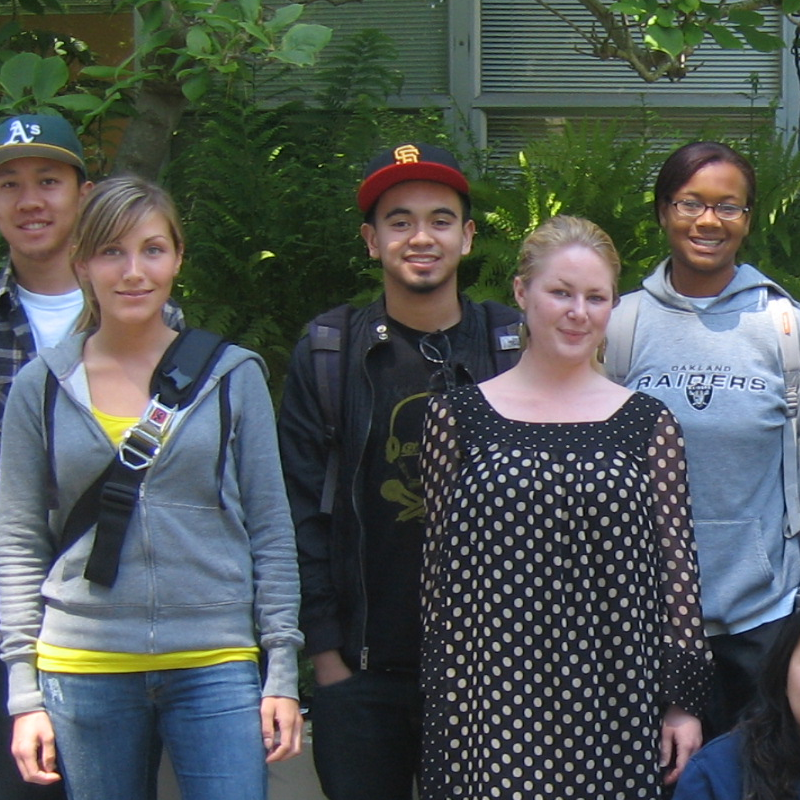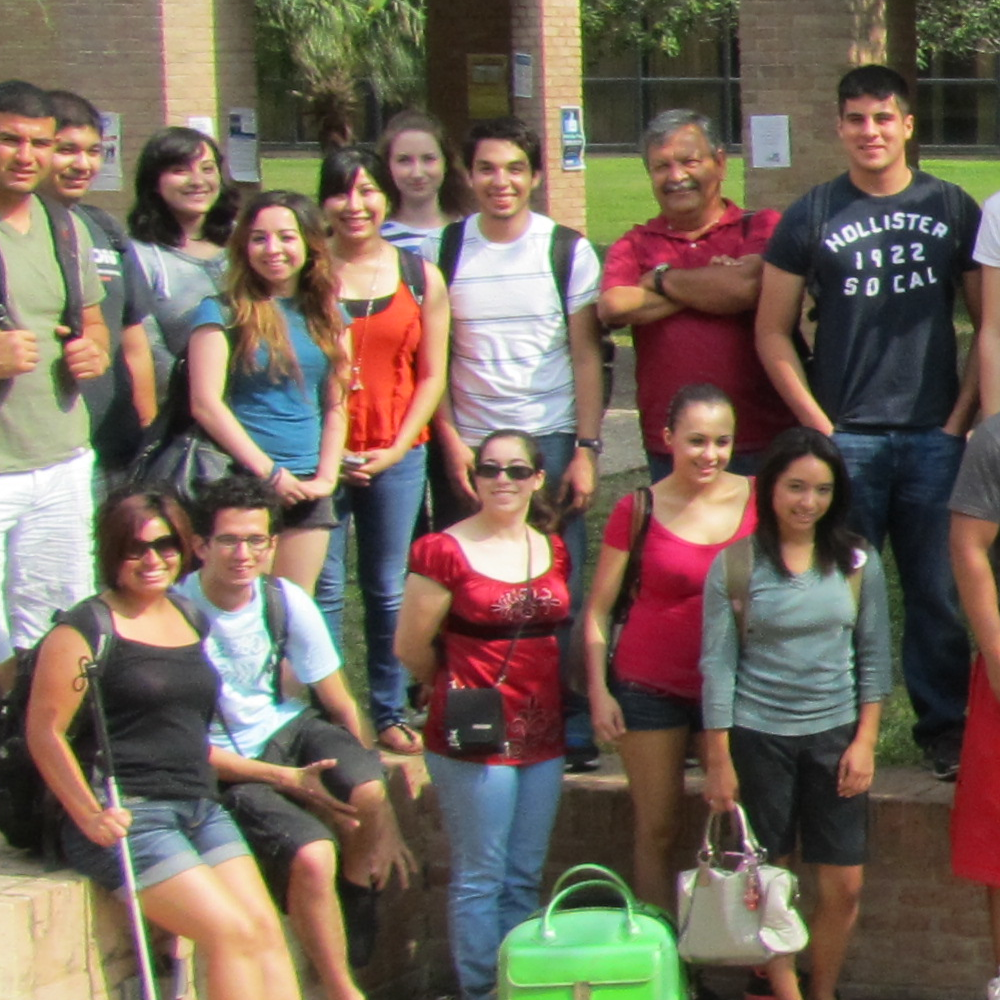Separating between Unobserved Consumer Types: Evidence from Airlines
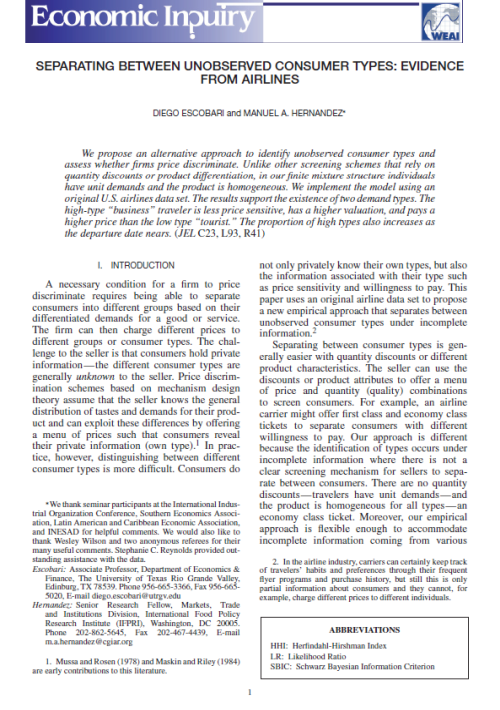
We propose an alternative approach to identify unobserved consumer types and assess whether firms price discriminate. Unlike other screening schemes that rely on quantity discounts or product differentiation, in our finite mixture structure individuals have unit demands and the product is homogeneous. We implement the model using an original U.S. airlines data set. The results support the existence of two demand types. The high-type “business” traveler is less price sensitive, has a higher valuation, and pays a higher price than the low type “tourist.” The proportion of high types also increases as the departure date nears.
An Analysis of Dynamic Price Discrimination in Airlines
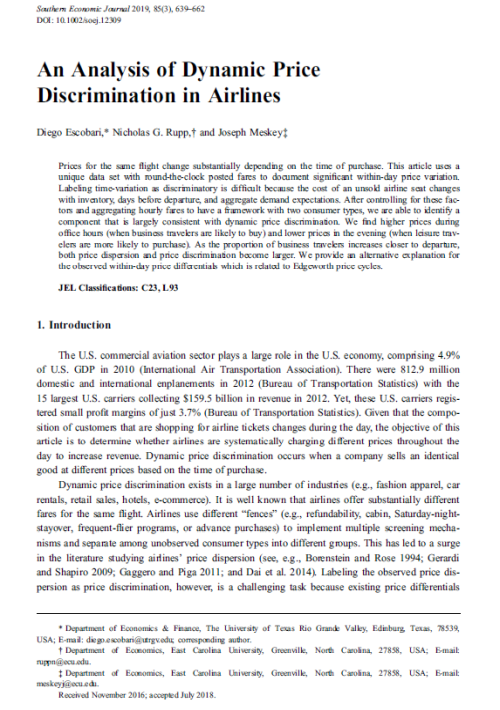
Prices for the same flight change substantially depending on the time of purchase. This article uses a unique data set with round-the-clock posted fares to document significant within-day price variation. Labeling time-variation as discriminatory is difficult because the cost of an unsold airline seat changes with inventory, days before departure, and aggregate demand expectations. After controlling for these factors and aggregating hourly fares to have a framework with two consumer types, we are able to identify a component that is largely consistent with dynamic price discrimination. We find higher prices during office hours (when business travelers are likely to buy) and lower prices in the evening (when leisure travelers are more likely to purchase). As the proportion of business travelers increases closer to departure, both price dispersion and price discrimination become larger.
Airport, Airline and Departure Time Choice and Substitution Patterns: An Empirical Analysis
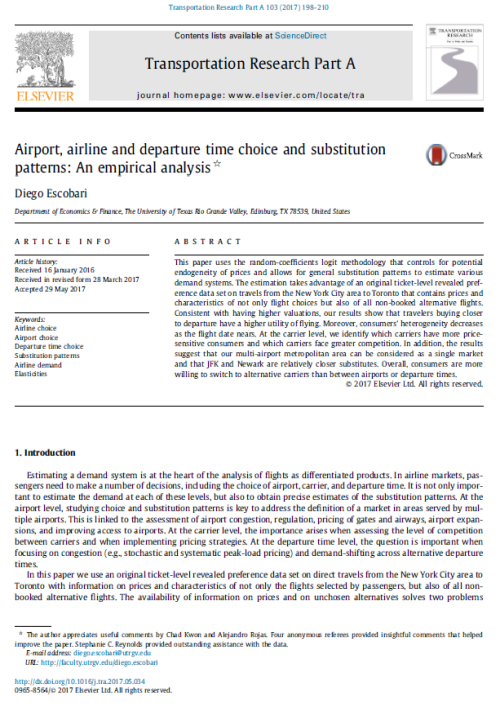
This paper uses the random-coefficients logit methodology that controls for potential endogeneity of prices and allows for general substitution patterns to estimate various demand systems. The estimation takes advantage of an original ticket-level revealed preference data set that contains prices and characteristics of not only flight choices but also of all non-booked alternative flights. Consistent with having higher valuations, our results show that travelers buying closer to departure have a higher utility of flying. Moreover, consumers’ heterogeneity decreases as the flight date nears. At the carrier level, we identify which carriers have more pricesensitive consumers and which carriers face greater competition. In addition, the results suggest that our multi-airport metropolitan area can be considered as a single market and that JFK and Newark are relatively closer substitutes. Overall, consumers are more willing to switch to alternative carriers than between airports or departure times.
Demand Uncertainty and Capacity Utilization in Airlines
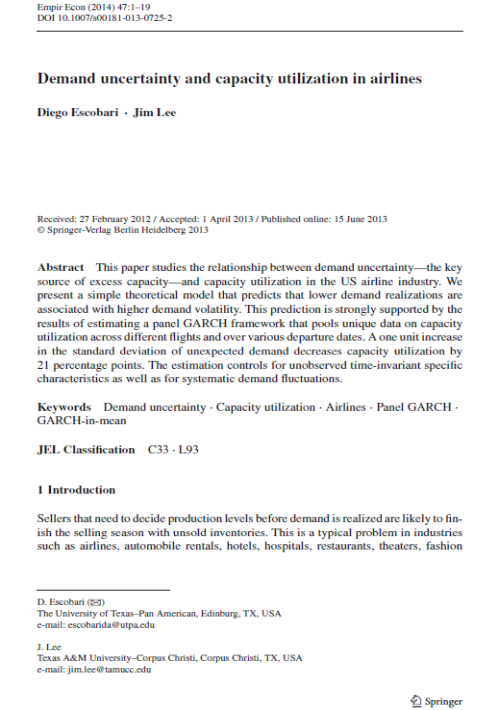
This paper studies the relationship between demand uncertainty—the key source of excess capacity—and capacity utilization in the US airline industry. We present a simple theoretical model that predicts that lower demand realizations are associated with higher demand volatility. This prediction is strongly supported by the results of estimating a panel GARCH framework that pools unique data on capacity utilization across different flights and over various departure dates. A one unit increase in the standard deviation of unexpected demand decreases capacity utilization by 21 percentage points. The estimation controls for unobserved time-invariant specific characteristics as well as for systematic demand fluctuations.
Estimating Dynamic Demand for Airlines
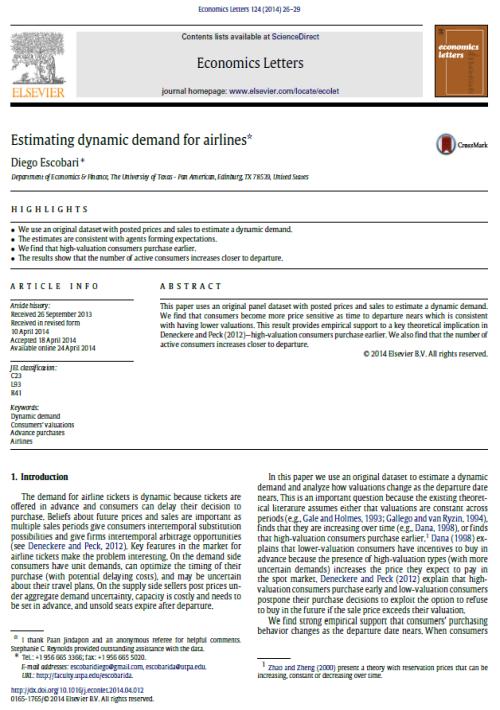
This paper uses an original panel dataset with posted prices and sales to estimate a dynamic demand. We find that consumers become more price sensitive as time to departure nears which is consistent with having lower valuations. This result provides empirical support to a key theoretical implication in Deneckere and Peck (2012)—high-valuation consumers purchase earlier. We also find that the number of active consumers increases closer to departure.
Price Discrimination through Refund Contracts in Airlines

This paper shows how an airline monopoly uses refundable and non-refundable tickets to screen consumers who are uncertain about their travel. Our theoretical model predicts that the difference between these two fares diminishes as individual demand uncertainty is resolved. Using an original data set from U.S. airline markets, we find strong evidence supporting our model. Price discrimination opportunities through refund contracts decline as the departure date nears and individuals learn about their demand.
Asymmetric Price Adjustments in Airlines
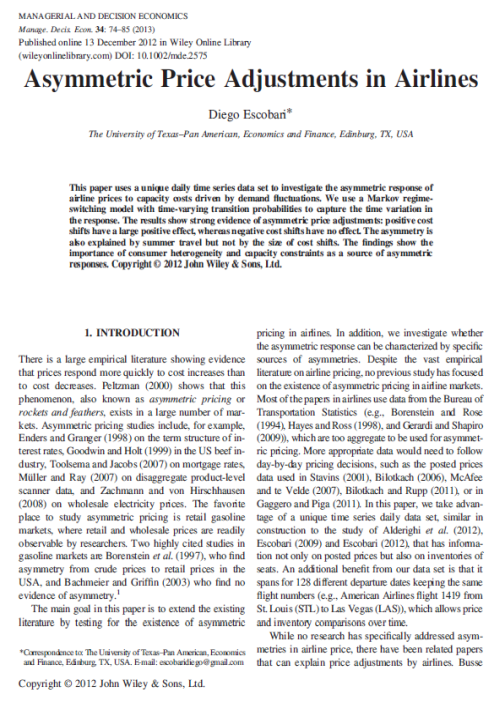
This paper uses a unique daily time series data set to investigate the asymmetric response of airline prices to capacity costs driven by demand fluctuations. We use a Markov regimeswitching model with time-varying transition probabilities to capture the time variation in the response. The results show strong evidence of asymmetric price adjustments: positive cost shifts have a large positive effect, whereas negative cost shifts have no effect. The asymmetry is also explained by summer travel but not by the size of cost shifts. The findings show the importance of consumer heterogeneity and capacity constraints as a source of asymmetric responses.
Dynamic Pricing, Advance Sales, and Aggregate Demand Learning in Airlines
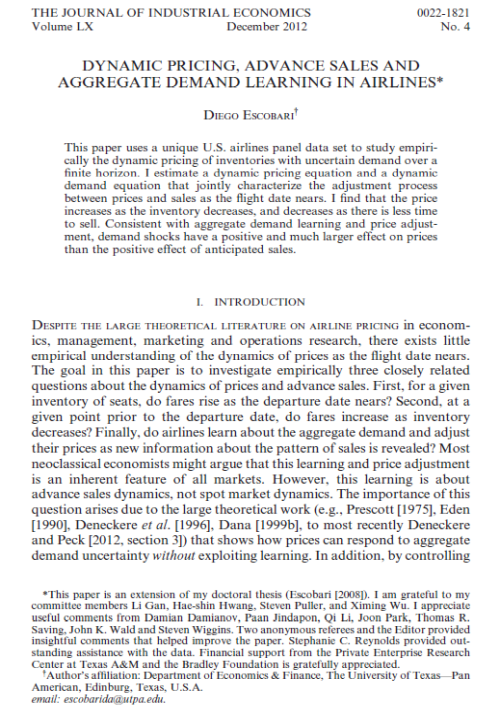
This paper uses a unique U.S. airlines panel data set to study empirically the dynamic pricing of inventories with uncertain demand over a finite horizon. I estimate a dynamic pricing equation and a dynamic demand equation that jointly characterize the adjustment process between prices and sales as the flight date nears. I find that the price increases as the inventory decreases, and decreases as there is less time to sell. Consistent with aggregate demand learning and price adjustment, demand shocks have a positive and much larger effect on prices than the positive effect of anticipated sales.
Demand Shifting across Flights and Airports in a Spatial Competition Model
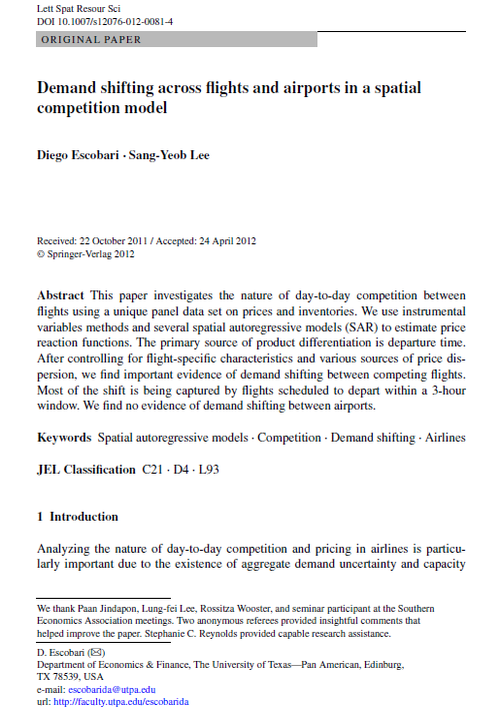
This paper investigates the nature of day-to-day competition between flights using a unique panel data set on prices and inventories. We use instrumental variables methods and several spatial autoregressive models (SAR) to estimate price reaction functions. The primary source of product differentiation is departure time. After controlling for flight-specific characteristics and various sources of price dispersion, we find important evidence of demand shifting between competing flights. Most of the shift is being captured by flights scheduled to depart within a 3-hour window. We find no evidence of demand shifting between airports.
Systematic Peak-load Pricing, Congestion Premia and Demand Diverting: Empirical Evidence
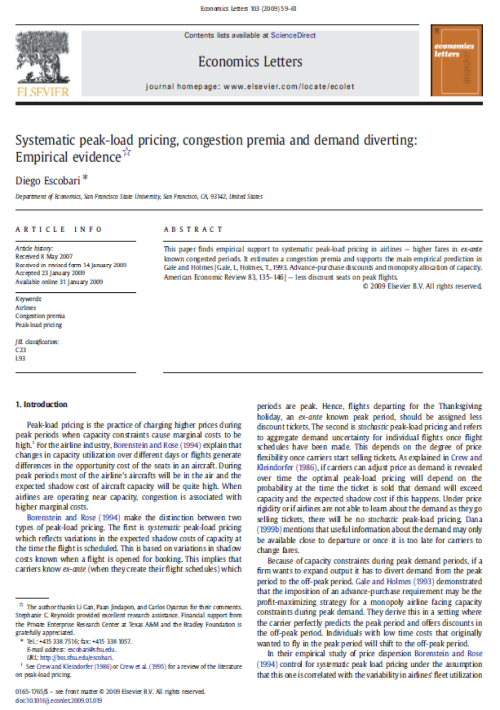
This paper finds empirical support to systematic peak-load pricing in airlines — higher fares in ex-ante known congested periods. It estimates a congestion premia and supports the main empirical prediction in Gale and Holmes [Gale, I., Holmes, T., 1993. Advance-purchase discounts and monopoly allocation of capacity. American Economic Review 83, 135–146] — less discount seats on peak flights.
Real Estate & Investments
Investors’ Uncertainty and Stock Market Risk
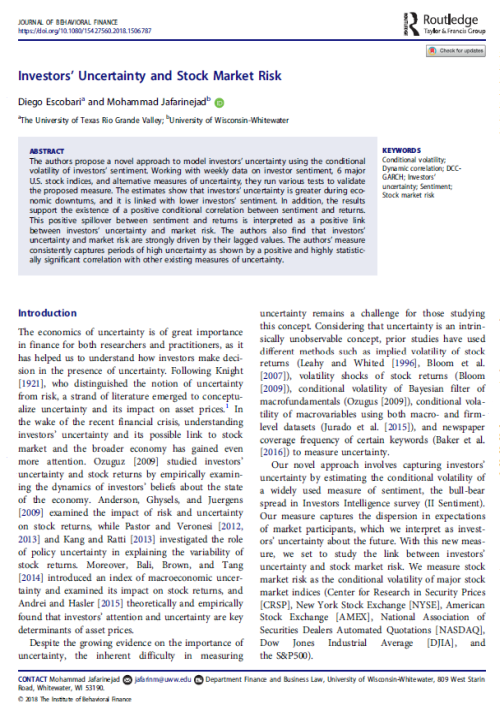
The authors propose a novel approach to model investors’ uncertainty using the conditional volatility of investors’ sentiment. Working with weekly data on investor sentiment, 6 major U.S. stock indices, and alternative measures of uncertainty, they run various tests to validate the proposed measure. The estimates show that investors’ uncertainty is greater during economic downturns, and it is linked with lower investors’ sentiment. In addition, the results support the existence of a positive link between investors’ uncertainty and market risk. The authors also find that investors’ uncertainty and market risk are strongly driven by their lagged values. The authors’ measure consistently captures periods of high uncertainty as shown by a positive and highly statistically significant correlation with other existing measures of uncertainty.
Changes in Sentiment on REIT Industry Excess Returns and Volatility
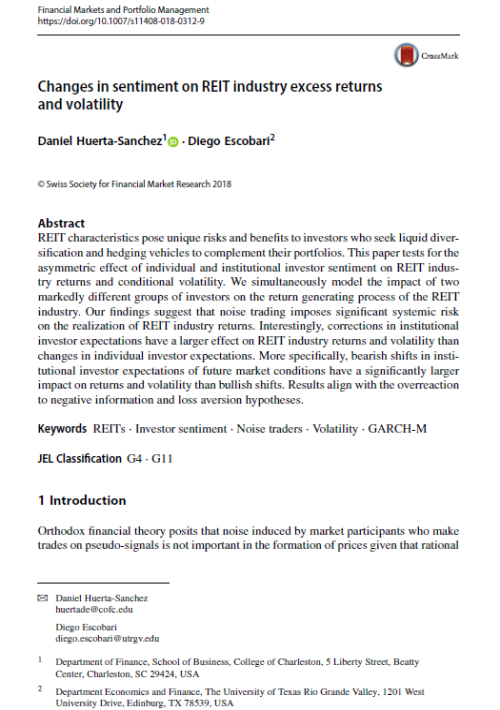
This paper tests for the asymmetric effect of individual and institutional investor sentiment on REIT industry returns and conditional volatility. We simultaneously model the impact of two markedly different groups of investors on the return generating process of the REIT industry. Our findings suggest that noise trading imposes significant systemic risk on the realization of REIT industry returns. Interestingly, corrections in institutional investor expectations have a larger effect on REIT industry returns and volatility than changes in individual investor expectations. More specifically, bearish shifts in institutional investor expectations of future market conditions have a significantly larger impact on returns and volatility than bullish shifts. Results align with the overreaction to negative information and loss aversion hypotheses.
Disentangling the Impacts of Industrial and Global Diversification on Firm Risk
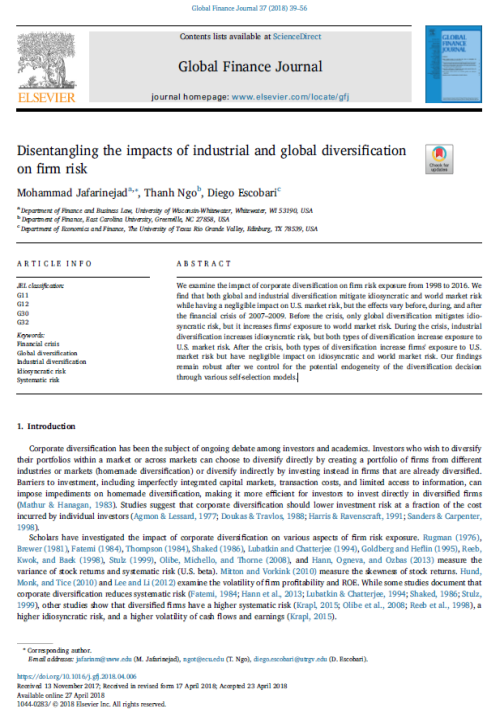
We examine the impact of corporate diversification on firm risk exposure from 1998 to 2016. We find that both global and industrial diversification mitigate idiosyncratic and world market risk while having a negligible impact on U.S. market risk, but the effects vary before, during, and after the financial crisis of 2007–2009. Before the crisis, only global diversification mitigates idiosyncratic risk, but it increases firms' exposure to world market risk. During the crisis, industrial diversification increases idiosyncratic risk, but both types of diversification increase exposure to U.S. market risk. After the crisis, both types of diversification increase firms' exposure to U.S. market risk but have negligible impact on idiosyncratic and world market risk. Our findings remain robust after we control for the potential endogeneity of the diversification decision through various self-selection models.
Identifying Price Bubble Periods in the Energy Sector
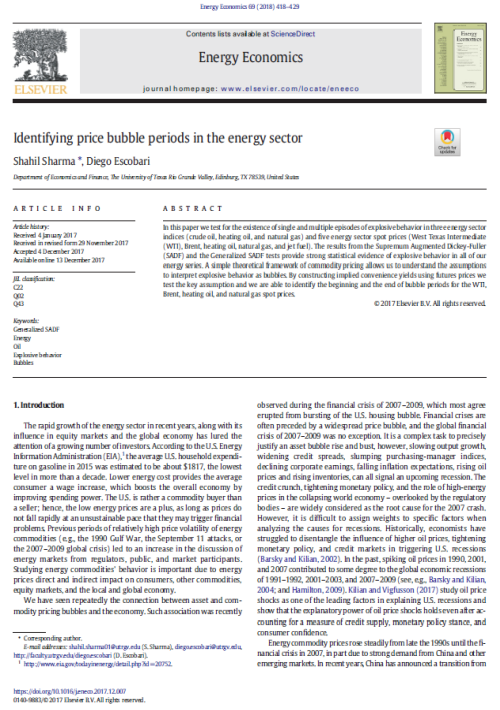
In this paper we test for the existence of single and multiple episodes of explosive behavior in three energy sector indices (crude oil, heating oil, and natural gas) and five energy sector spot prices (West Texas Intermediate (WTI), Brent, heating oil, natural gas, and jet fuel). The results from the Supremum Augmented Dickey-Fuller (SADF) and the Generalized SADF tests provide strong statistical evidence of explosive behavior in all of our energy series. A simple theoretical framework of commodity pricing allows us to understand the assumptions to interpret explosive behavior as bubbles. By constructing implied convenience yields using futures prices we test the key assumption and we are able to identify the beginning and the end of bubble periods for the WTI, Brent, heating oil, and natural gas spot prices.
Identifying Bubbles in Latin American Equity Markets: Phillips-Perron-based Tests and Linkages
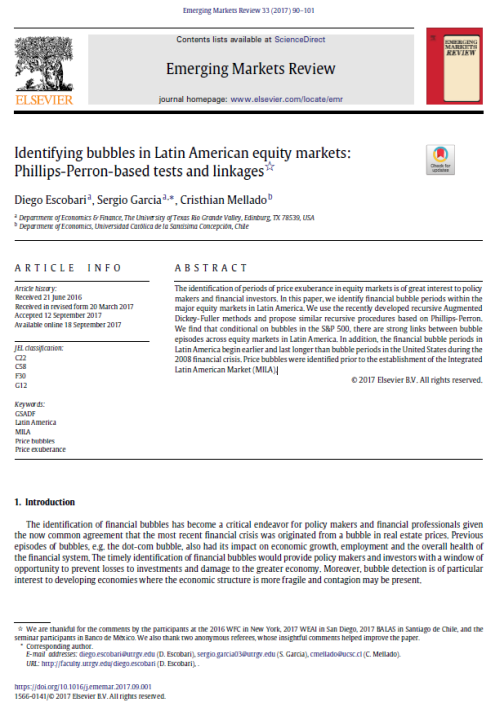
In this paper, we identify financial bubble periods within the major equity markets in Latin America. We use the recently developed recursive Augmented Dickey-Fuller methods and propose similar recursive procedures based on Phillips-Perron. We find that conditional on bubbles in the S&P 500, there are strong links between bubble episodes across equity markets in Latin America. In addition, the financial bubble periods in Latin America begin earlier and last longer than bubble periods in the United States during the 2008 financial crisis. Price bubbles were identified prior to the establishment of the Integrated Latin American Market (MILA).
The Impact of Oil Shocks on the Housing Market: Evidence from Canada and U.S.
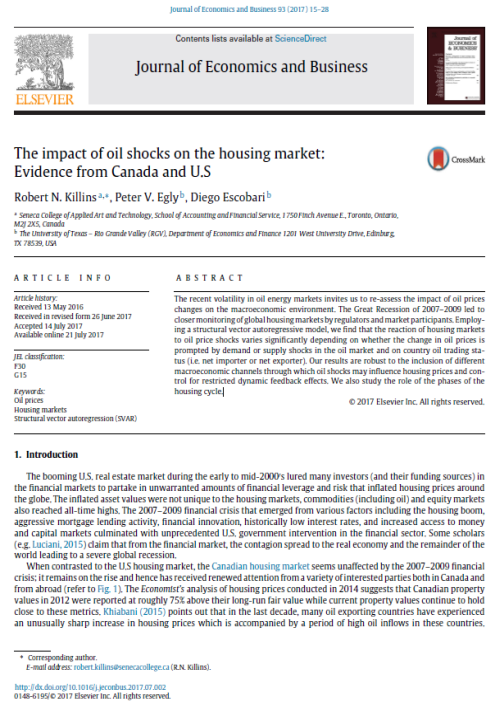
The recent volatility in oil energy markets invites us to re-assess the impact of oil prices changes on the macroeconomic environment. The Great Recession of 2007–2009 led to closer monitoring of global housing markets by regulators and market participants. Employing a structural vector autoregressive model, we find that the reaction of housing marketsto oil price shocks varies significantly depending on whether the change in oil prices is prompted by demand or supply shocks in the oil market and on country oil trading status (i.e. net importer or net exporter). Our results are robust to the inclusion of different macroeconomic channels through which oil shocks may influence housing prices and con-trol for restricted dynamic feedback effects. We also study the role of the phases of the housing cycle.
Reducing Asymmetric Information in Venture Capital Backed IPOs
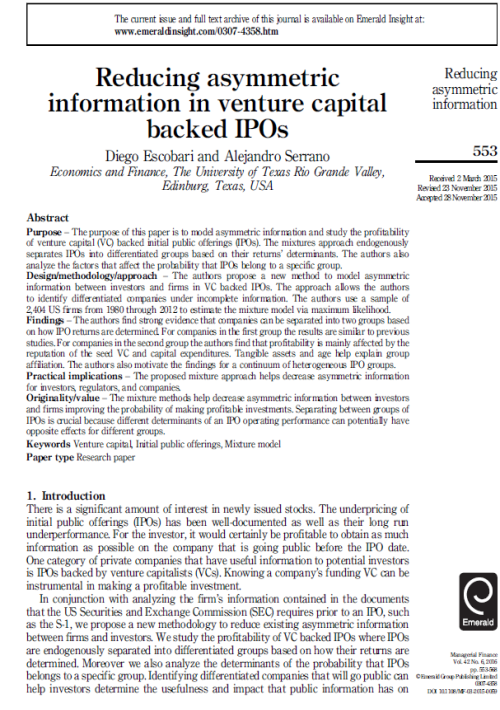
The purpose of this paper is to model asymmetric information and study the profitability of venture capital (VC) backed initial public offerings (IPOs). The mixtures approach endogenously separates IPOs into differentiated groups based on their returns’ determinants. The authors also analyze the factors that affect the probability that IPOs belong to a specific group. The authors find strong evidence that companies can be separated into two groups based on how IPO returns are determined. For companies in the first group the results are similar to previous studies. For companies in the second group the authors find that profitability is mainly affected by the reputation of the seed VC and capital expenditures. Tangible assets and age help explain group affiliation. The authors also motivate the findings for a continuum of heterogeneous IPO groups.
The Impact of Government Intervention on the Stabilization of Domestic Financial Markets
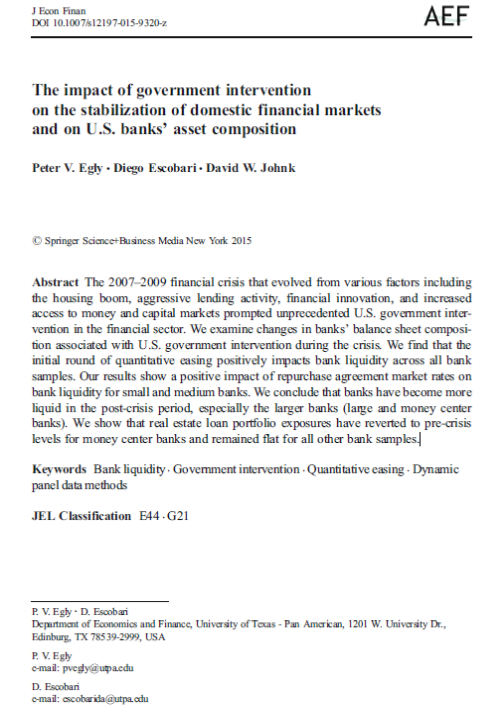
We examine changes in banks’ balance sheet composition associated with U.S. government intervention during the 2007–2009 crisis. We find that the initial round of quantitative easing positively impacts bank liquidity across all bank samples. Our results show a positive impact of repurchase agreement market rates on bank liquidity for small and medium banks.We conclude that banks have become more liquid in the post-crisis period, especially the larger banks (large and money center banks). We show that real estate loan portfolio exposures have reverted to pre-crisis levels for money center banks and remained flat for all other bank samples.
Long-Run Equilibrium Shift and Short-Run Dynamics of U.S. Home Price Tiers during the Bubble
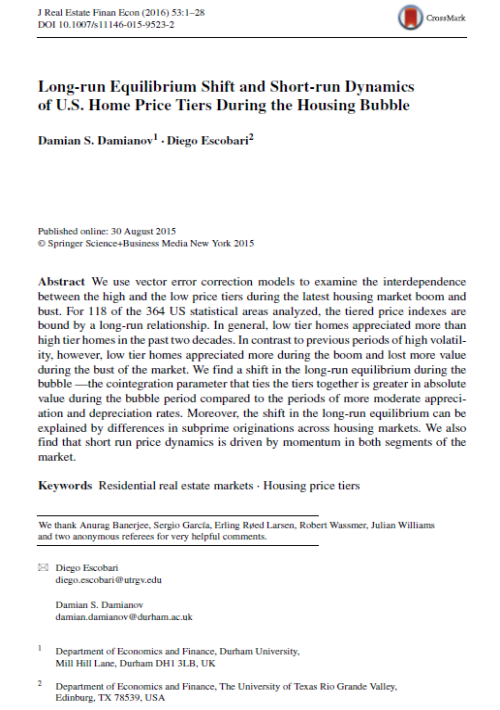
We use vector error correction models to examine the interdependence between the high and the low price tiers during the latest housing market boom and bust. For 118 of the 364 US statistical areas analyzed, the tiered price indexes are bound by a long-run relationship. In general, low tier homes appreciated more than high tier homes in the past two decades. We find a shift in the long-run equilibrium during the bubble —the cointegration parameter that ties the tiers together is greater in absolute value during the bubble period compared to the periods of more moderate appreciation and depreciation rates. Moreover, the shift in the long-run equilibrium can be explained by differences in subprime originations across housing markets.
Date Stamping Bubbles in Real Estate Investment Trusts
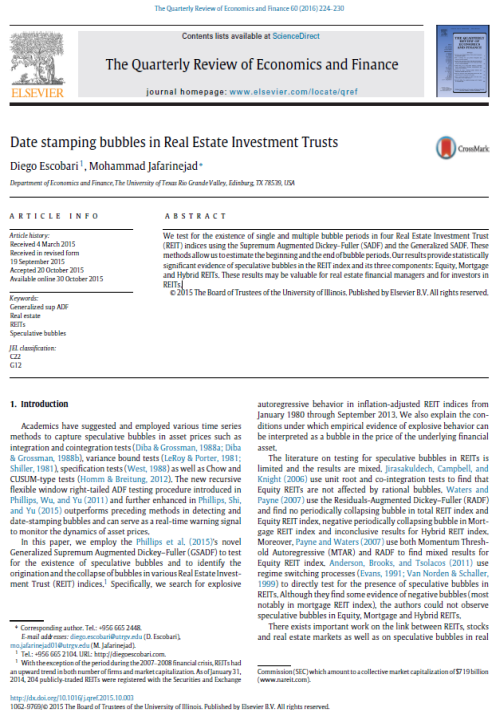
We test for the existence of single and multiple bubble periods in four Real Estate Investment Trust (REIT) indices using the Supremum Augmented Dickey–Fuller (SADF) and the Generalized SADF. These methods allow us to estimate the beginning and the end of bubble periods. Our results provide statistically significant evidence of speculative bubbles in the REIT index and its three components: Equity, Mortgage and Hybrid REITs. These results may be valuable for real estate financial managers and for investors inREITs.
The Liquidity Crisis, Investor Sentiment, and REIT Returns and Volatility

The real estate investment trust (REIT) industry experienced a liquidity crisis resulting from reduced access to credit commitments as banks were restoring their balance sheets during the 2007-2009 financial crisis. Employing generalized autoregressive conditional heteroscedasticity (GARCH) models we examine the impact of the liquidity crisis and investor sentiment on REIT returns and volatility over the sample period from December 2001 to February 2013. We find that the liquidity crisis negatively impacts REIT returns and helps explain increases in volatility; this finding is robust to multiple specifications. We show that investor sentiment is a significant factor in explaining the REIT return generating process with institutional sentiment playing a dominating role over individual sentiment; furthermore, institutional sentiment was the only relevant sentiment variable during liquidity crisis.
Virtual Integration of Financial Markets: A Dynamic Correlation Analysis of the Creation of MILA
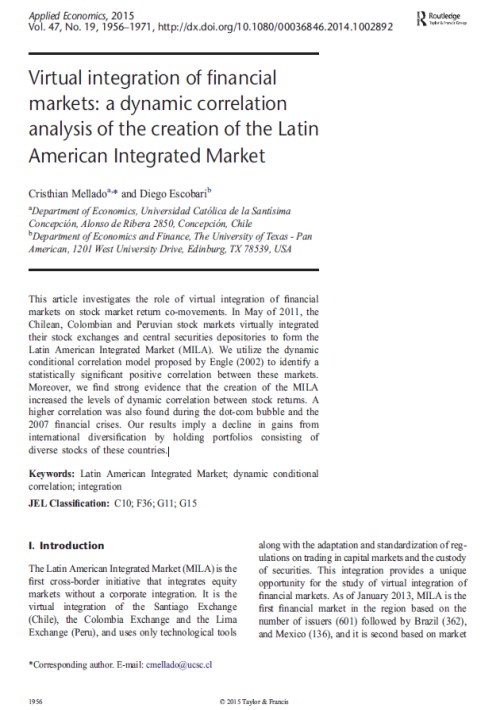
This article investigates the role of virtual integration of financial markets on stock market return co-movements. In May of 2011, the Chilean, Colombian and Peruvian stock markets virtually integrated their stock exchanges and central securities depositories to form the Latin American Integrated Market (MILA). We utilize the dynamic conditional correlation model proposed by Engle (2002) to identify a statistically significant positive correlation between these markets. Moreover, we find strong evidence that the creation of the MILA increased the levels of dynamic correlation between stock returns. A higher correlation was also found during the dot-com bubble and the 2007 financial crises. Our results imply a decline in gains from international diversification by holding portfolios consisting of diverse stocks of these countries.
A Time Series Test to Identify Housing Bubbles
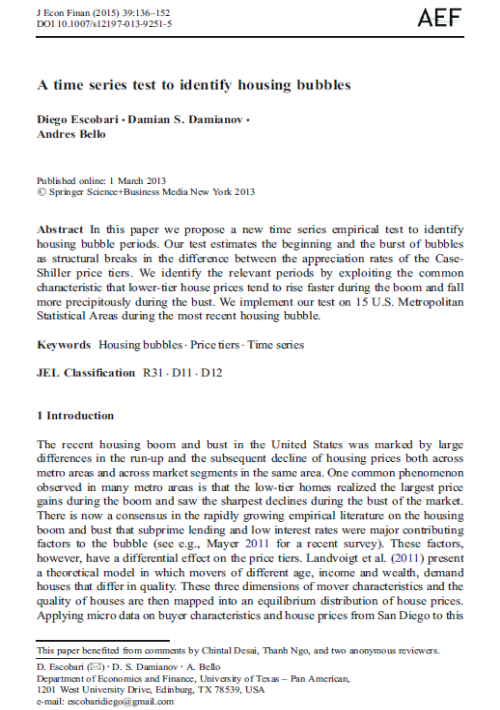
In this paper we propose a new time series empirical test to identify housing bubble periods. Our test estimates the beginning and the burst of bubbles as structural breaks in the difference between the appreciation rates of the Case- Shiller price tiers. We identify the relevant periods by exploiting the common characteristic that lower-tier house prices tend to rise faster during the boom and fall more precipitously during the bust. We implement our test on 15 U.S. Metropolitan Statistical Areas during the most recent housing bubble.
Other (Macro & Public)
Expectations and the Dynamic Feedback between Foreign Direct Investment and Economic Growth
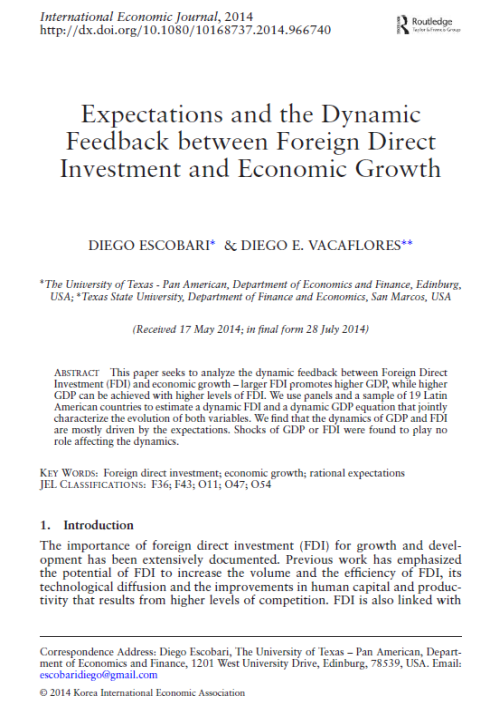
This paper seeks to analyze the dynamic feedback between Foreign Direct Investment (FDI) and economic growth – larger FDI promotes higher GDP, while higher GDP can be achieved with higher levels of FDI. We use panels and a sample of 19 Latin American countries to estimate a dynamic FDI and a dynamic GDP equation that jointly characterize the evolution of both variables.We find that the dynamics of GDP and FDI are mostly driven by the expectations. Shocks of GDP or FDI were found to play no role affecting the dynamics.
Output Growth and Unexpected Government Expenditures
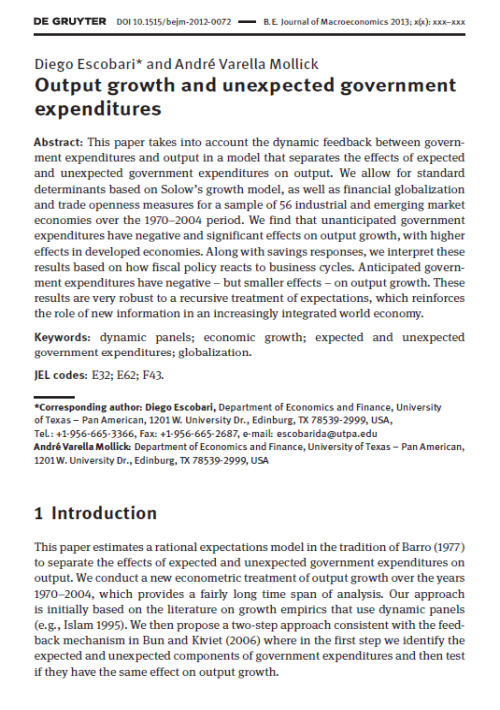
This paper takes into account the dynamic feedback between government expenditures and output in a model that separates the effects of expected and unexpected government expenditures on output. We allow for standard determinants based on Solow’s growth model, as well as financial globalization and trade openness measures for a sample of 56 industrial and emerging market economies over the 1970-2004 period. We find that unanticipated government expenditures have negative and significant effects on output growth, with higher effects in developed economies. Along with savings responses, we interpret these results based on how fiscal policy reacts to business cycles. Anticipated government expenditures have negative - but smaller effects - on output growth.
Testing for Stochastic and β-convergence in Latin American Countries
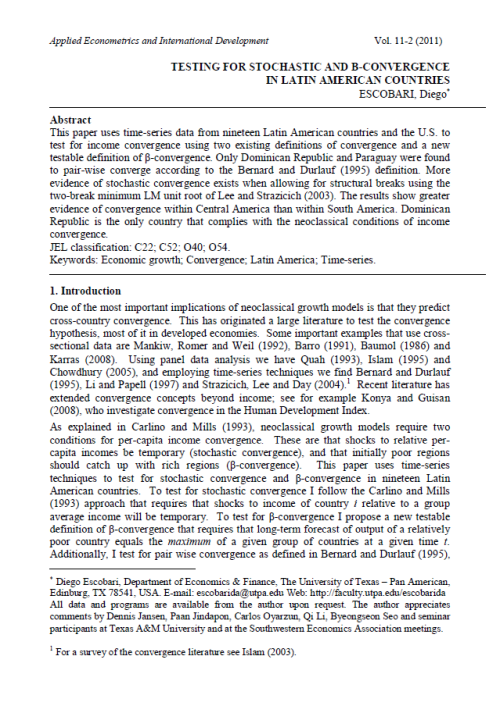
This paper uses time-series data from nineteen Latin American countries and the U.S. to test for income convergence using two existing definitions of convergence and a new testable definition of β-convergence. Only Dominican Republic and Paraguay were found to pair-wise converge according to the Bernard and Durlauf (1995) definition. More evidence of stochastic convergence exists when allowing for structural breaks using the two-break minimum LM unit root of Lee and Strazicich (2003). The results show greater evidence of convergence within Central America than within South America. Dominican Republic is the only country that complies with the neoclassical conditions of income convergence.
On the Practice of Bundling a Free Gift with a Threshold Purchase
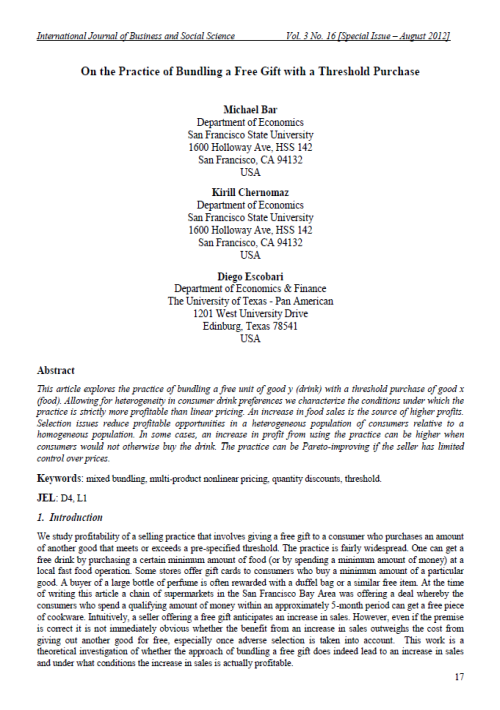
This article explores the practice of bundling a free unit of good y (drink) with a threshold purchase of good x (food). Allowing for heterogeneity in consumer drink preferences we characterize the conditions under which the practice is strictly more profitable than linear pricing. An increase in food sales is the source of higher profits. Selection issues reduce profitable opportunities in a heterogeneous population of consumers relative to a homogeneous population. In some cases, an increase in profit from using the practice can be higher when consumers would not otherwise buy the drink. The practice can be Pareto-improving if the seller has limited control over prices.
Frequent Flyer Programs Premium and the Role of Airport Dominance
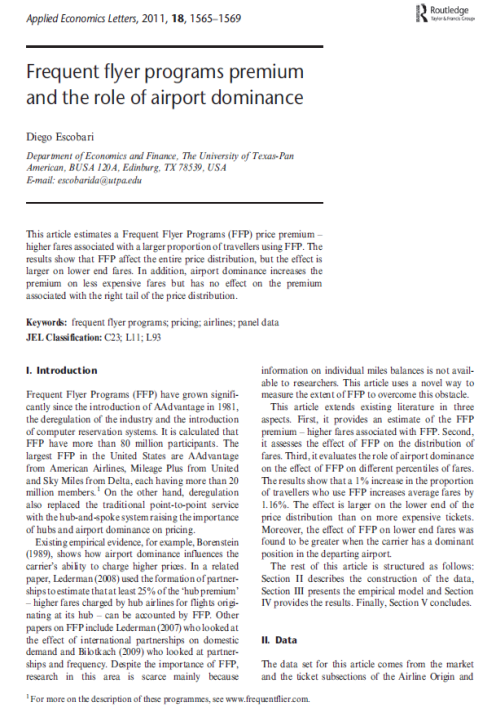
We propose an alternative approach to identify unobserved consumer types and assess whether firms price discriminate. Unlike other screening schemes that rely on quantity discounts or product differentiation, in our finite mixture structure individuals have unit demands and the product is homogeneous. We implement the model using an original U.S. airlines data set. The results support the existence of two demand types. The high-type “business” traveler is less price sensitive, has a higher valuation, and pays a higher price than the low type “tourist.” The proportion of high types also increases as the departure date nears.
Imperfect Detection of Tax Evasion in a Corrupt Tax Administration
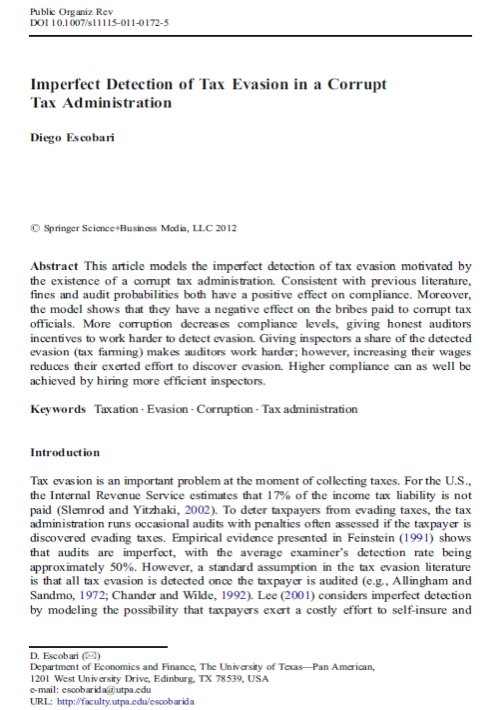
This article models the imperfect detection of tax evasion motivated by the existence of a corrupt tax administration. Consistent with previous literature, fines and audit probabilities both have a positive effect on compliance. Moreover, the model shows that they have a negative effect on the bribes paid to corrupt tax officials. More corruption decreases compliance levels, giving honest auditors incentives to work harder to detect evasion. Giving inspectors a share of the detected evasion (tax farming) makes auditors work harder; however, increasing their wages reduces their exerted effort to discover evasion. Higher compliance can as well be achieved by hiring more efficient inspectors.
Working Papers
Getting on and moving up the property ladder: Real hedging in the U.S. housing market before and after the crisis
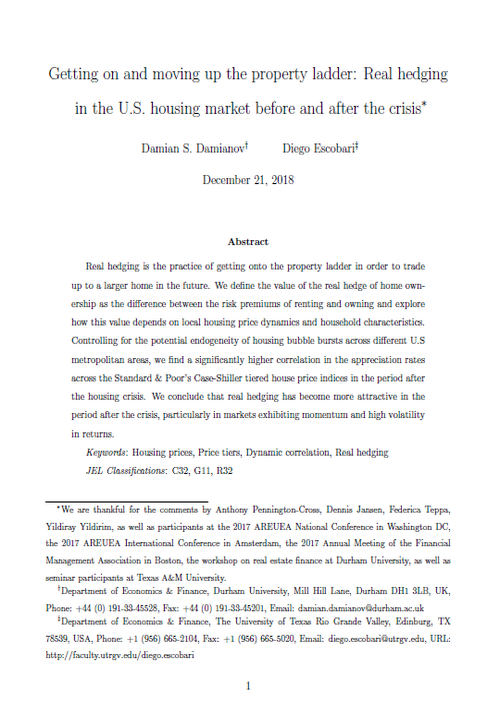
Real hedging is the practice of getting onto the property ladder in order to trade up to a larger home in the future. We define the value of the real hedge of home ownership as the difference between the risk premiums of renting and owning and explore how this value depends on local housing price dynamics and household characteristics. Controlling for the potential endogeneity of housing bubble bursts across different U.S metropolitan areas, we find a significantly higher correlation in the appreciation rates across the Standard & Poor's Case-Shiller tiered house price indices in the period after the housing crisis. We conclude that real hedging has become more attractive in the period after the crisis, particularly in markets exhibiting momentum and high volatility in returns.
Price Discrimination and Focal Points for Tacit Collusion: Evidence from the Airline Industry

We use unique data sets with round-the-clock posted fares and a regression discontinuity design to identify price discrimination in advance-purchase discounts. Price discrimination increases fares by 7.6% at 14 days to departure, and by 14% at 7 days to departure. While competition reduces price discrimination, it is unaffected by product variety for a multiproduct monopolist. The results show that the arbitrary thresholds of 7 and 14 days-in-advance serve as focal points for tacit collusion and to implement price discrimination in competitive markets. For round-trip tickets price discrimination depends on the days-in-advance for both the outbound and inbound flights.
Price Dispersion under Costly Capacity and Demand Uncertainty
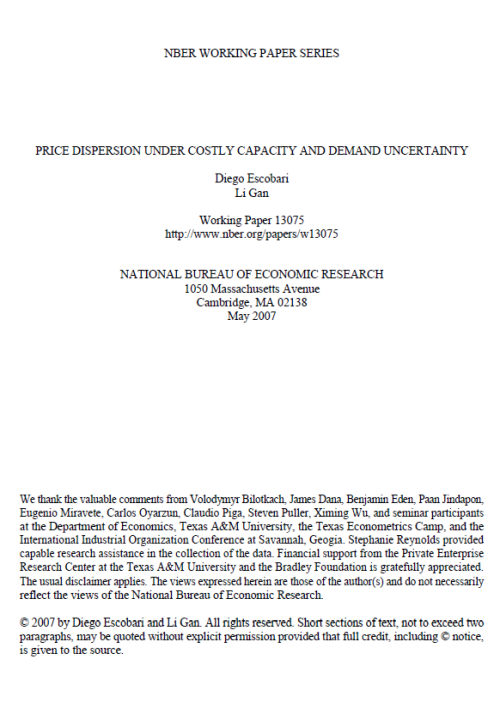
This paper tests the empirical importance of the price dispersion predictions of the Prescott-Eden-Dana (PED) models. Equilibrium price dispersion is derived in a setting with costly capacity and demand uncertainty where different fares can be explained by the different selling probabilities. The PED models predict that a lower selling probability leads to a higher price. Moreover, this effect is larger in more competitive markets. Despite its applications to several important market phenomena, there exists little empirical evidence supporting the PED models, mostly because of the difficulty of coming up with an appropriate measure of the selling probabilities. Using a unique panel of U.S. airline fares and seat inventories, we find evidence that strongly supports both predictions of the models. After controlling for the effect of aggregate demand uncertainty on fares, we also obtain evidence of second degree price discrimination in the form of advance-purchase discounts.
Book Chapters
The Choice of Airport, Airline, and Departure Date and Time: Estimating the Demand for Flights
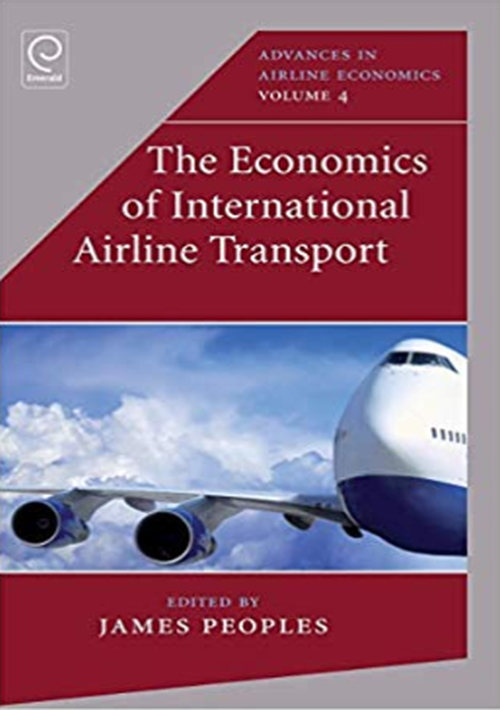
This chapter estimates the demand for flights in an international air travel market using a unique dataset with detailed information not only on flight choices but also on contemporaneous prices and characteristics of all the alternative non-booked flights. The estimation strategy employs a simple discrete choice random utility model that we use to analyze how choices and its response to prices depend on the departing airport, the identity of the carrier, and the departure date and time. The results show that a 10% increase in prices in a 100-seat aircraft throughout a 100-period selling season decreases quantity demanded by 7.7 seats. We also find that the quantity demanded is more responsive to prices for Delta and American, during morning and evening flights and that the response to prices changes significantly over different departure dates.
Pricing and Travelers’ Decision to Use Frequent Flyer Miles: Evidence from the U.S. Airline Industry
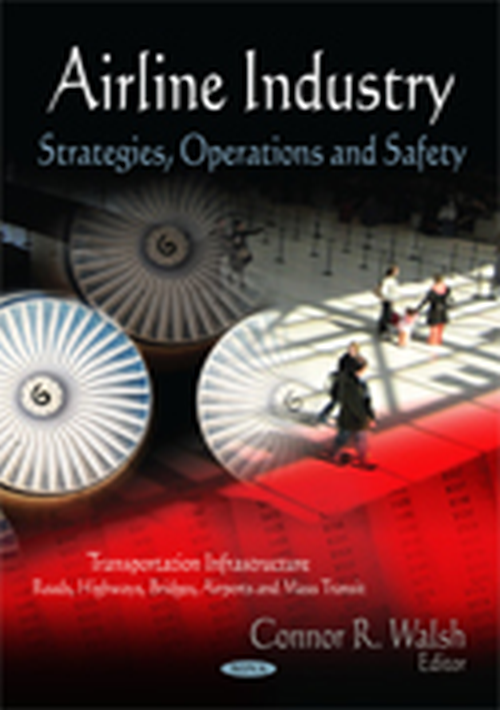
In this chapter we use a novel way to measure the extent of Frequent Flyer Programs (FFP) that allows us to analyze how these programs change from route to route, across carriers and over time. The dataset, which covers the quarters from 1993.1 to 2009.3, was constructed with data obtained from the Bureau of Transportation and Statistics, and it has information on prices, proportion of frequent flyer tickets as well as various route and carrier variables. Using panel data techniques to control for unobservables along with the use of instrumental variables to control for potentially endogenous regressors, the results found are consistent with our economic model: travelers are more likely to redeem their frequent flyer miles in more expensive routes. Moreover, business travelers, who usually pay higher prices, were found to be less price sensitive than tourists when switching to buy with accumulated miles.
A Theoretical Model of Collusion and Regulation in an Electricity Spot Market
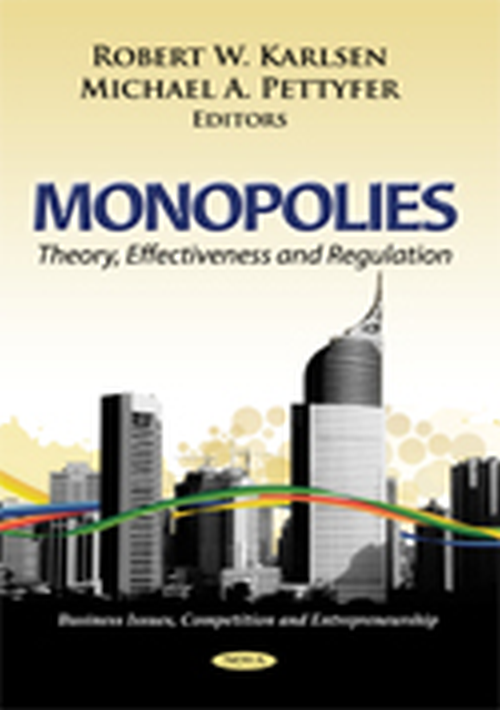
This chapter presents a theoretical model of collusion and regulation in a wholesale electricity spot market. Given a demand for electricity, competing generators report their marginal costs. Then, only generators with the lowest marginal costs are selected to sell at a price equal to the marginal costs of the last generator selected to sell. The results show that under a fixed price level it is a weakly dominant strategy to truthfully report the marginal cost. Variable (or endogenous) prices create the possibility of profitable collusion among generators. The results show that a necessary condition for collusion to be sustainable is that the marginal cost reported by the marginal generator should be higher than the average of the true marginal costs. The existence of collusion fines and audit probabilities were found to be effective in deterring collusion. It is also shown that more efficient generators have less incentive to collude.

